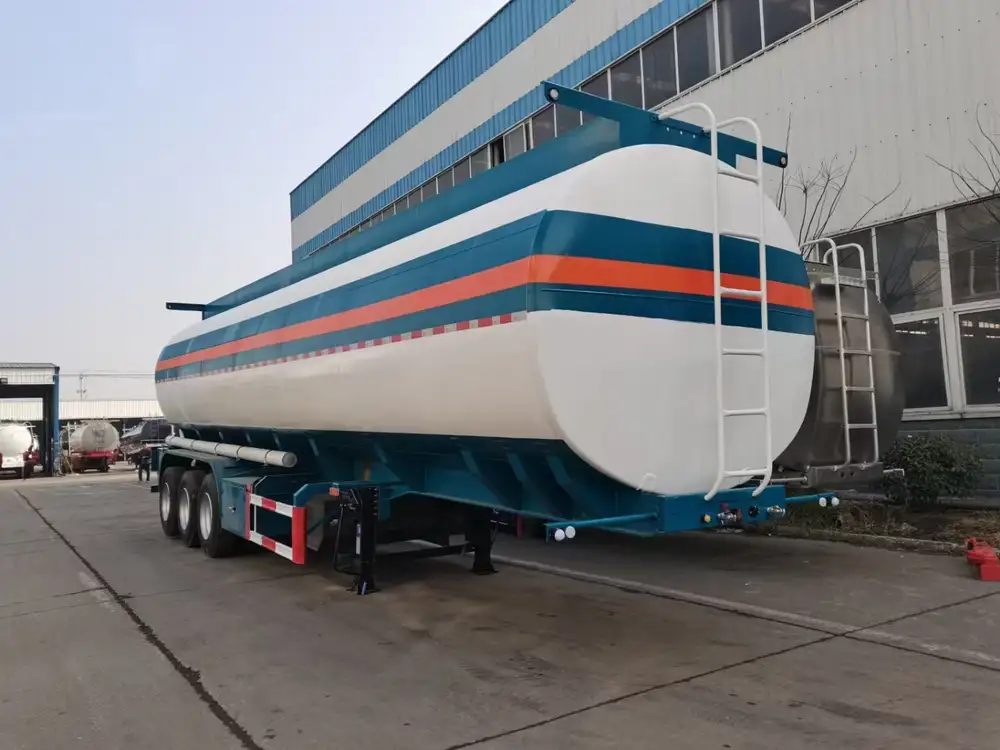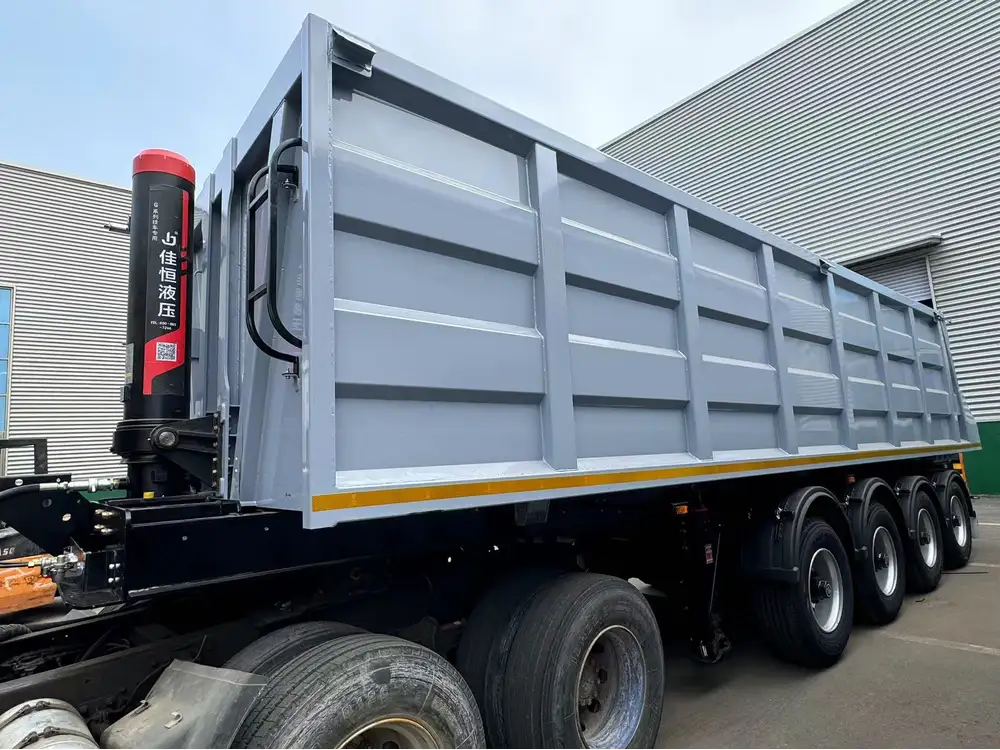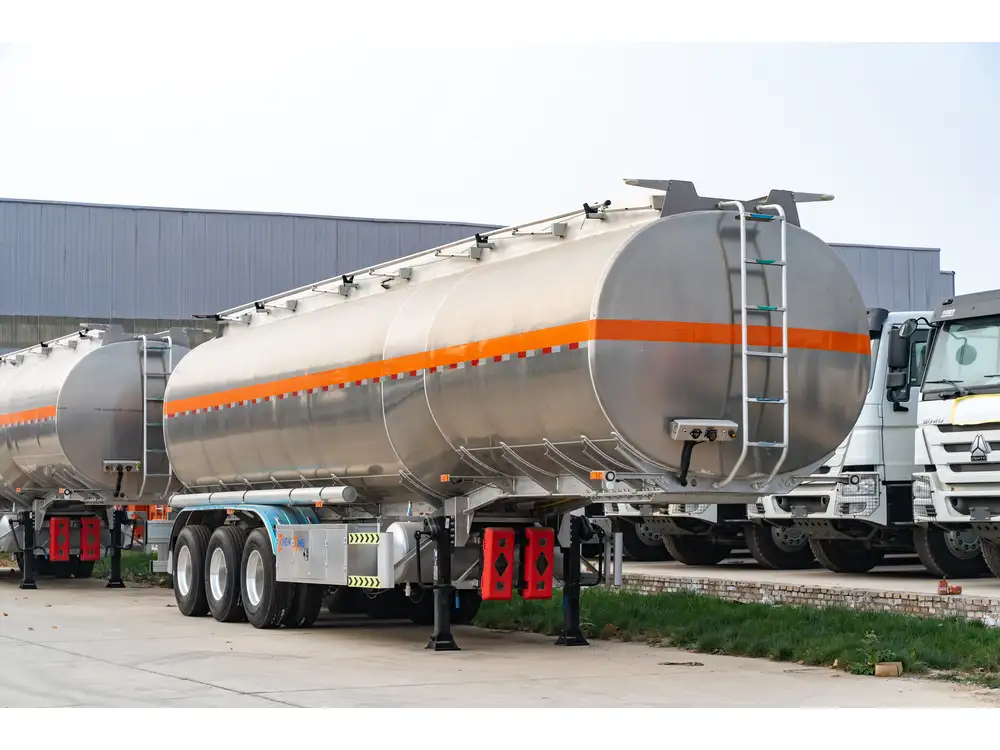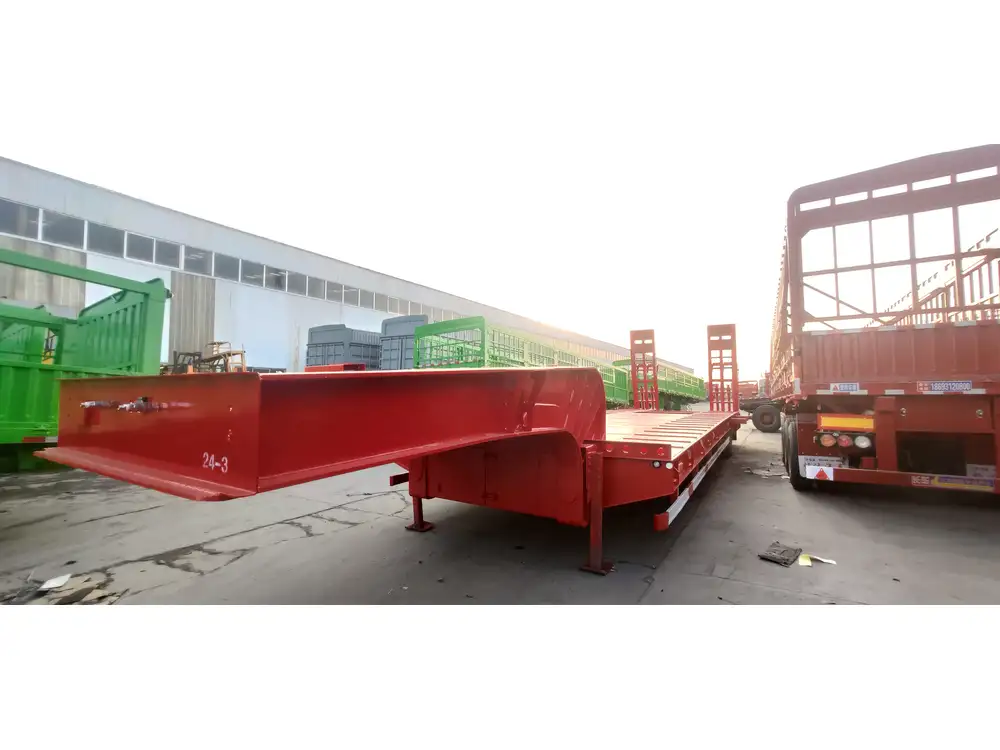Introduction to Trailer Dumps
Creating a trailer dump, a specialized type of semi-trailer designed for carrying and unloading bulk materials, requires insight into various technical aspects, manufacturing processes, and regulatory considerations. This guide provides an extensive look into the essential elements and complex design choices involved in constructing a functional, efficient, and durable trailer dump.
Key Components of a Trailer Dump

1. Frame Structure
- Material Selection: The frame serves as the backbone. Materials such as high-strength steel or aluminum must be considered for their strength-to-weight ratio, durability, and resistance to corrosion.
- Design: Utilize a robust cross-member framework that provides optimal support while reducing the overall weight. Advanced CAD software can simulate loading conditions to optimize the frame design.
2. Dump Mechanism
- Hydraulic System: A powerful hydraulic cylinder facilitates the tipping motion. The hydraulic system must be designed to withstand the weight of materials, requiring precise calculations for cylinder dimensions and pressure ratings.
- Tipping Angle: Consideration for the maximum tipping angle is crucial. Typically, a range of 45 to 60 degrees is adequate for most applications, but specific designs may vary depending on the intended use.
| Component | Description | Considerations |
|---|---|---|
| Hydraulic Cylinder | Initiates the dumping process | Size and PSI should match the weight load and trailer dimensions. |
| Control Valves | Regulate fluid flow | Must withstand hydraulic pressures; consider electronic vs manual controls. |
3. Body Design
- Material Composition: The body can be constructed from steel, aluminum, or composite materials, each offering differing benefits regarding weight, durability, and cost.
- Shape and Size: Larger dumps typically have an extended design to accommodate greater volumes; however, they should remain within legal road limits to avoid penalties.

Manufacturing Processes for Trailer Dumps
1. Welding and Fabrication Techniques
- Welding Standards: Employ certified welders and adhere to established welding standards (ASME, AWS) to ensure frame strength and integrity.
- Fabrication: Precision fabrication machinery should be employed to enhance tolerances and minimize defects in parts fitting, ensuring a seamless assembly process.
2. Surface Treatment
- Protective Coatings: Applying corrosion-resistant coatings such as powder coating or galvanization can significantly extend the life of a trailer dump.
- Quality Control: After surface treatment, conduct thorough inspections to ensure no surface contaminants affect adhesion.

3. Assembly Line Efficiency
- Lean Manufacturing Principles: Evaluate your manufacturing process using lean methodologies to reduce waste and improve efficiency, which in turn can lower production costs and increase output.
Regulatory Compliance
1. Safety Standards
- DOT Regulations: Adhere to the Department of Transportation (DOT) regulations for trailer dimensions and safety features. This includes implementing safety features such as reflective tape, emergency braking systems, and proper lighting.
- Load Capacity Testing: Rigorous testing procedures must be implemented to validate the load capacity of the trailer dump, minimizing risks during operation.

Maintenance and Industry Best Practices
1. Regular Inspections
- Inspection Schedule: Establish a routine maintenance schedule that includes inspections of the hydraulic system, frame, coupling systems, and safeguards against wear and tear.
- Documentation: Maintain detailed maintenance logs to ensure compliance with safety regulations and to address any potential issues proactively.
2. Training Personnel
- Operator Training: Proper operator training is critical for safety and efficiency. Implement training programs focusing on operational protocols, equipment handling, and emergency procedures.
- Maintenance Training: Technicians should receive education on routine maintenance and emergency repairs to reduce downtime.

User Needs and Tailored Solutions
In the world of trailer dumps, understanding the dynamic needs of users is vital. Tailored solutions can address various sectors such as construction, agriculture, and waste management, each with unique requirements.
Customization Options
Size Adjustments: Offer customizable lengths and widths based on user applications, whether for carrying gravel in construction or transporting agricultural products.
Material Choices: Present options for lighter materials vs. heavier-duty construction based on the specific industries served.
Conclusion
Constructing a trailer dump requires an intricate understanding of design, manufacturing, and maintenance elements. By focusing on high-quality materials, adhering to safety standards, and considering user-specific needs, manufacturers can create efficient and reliable semi-trailer dumps tailored to diverse applications. Always evaluate advancements in technology and industry best practices to enhance your offering and stay competitive in an ever-evolving market.

Frequently Asked Questions
What materials are best for constructing trailer dumps?
The choice of materials depends on intended use. High-strength steel provides durability, while aluminum offers a lightweight option, crucial for fuel efficiency.
How often should trailer dumps be maintained?
Routine inspections are recommended every three months, with comprehensive maintenance checks bi-annually to ensure safety and functionality.

What is the legal weight limit for trailer dumps on the road?
Weight limits vary by jurisdiction, but typically, the gross vehicle weight limit ranges from 80,000 pounds in the U.S. Consult local regulations for specific guidelines.
Can trailer dumps be customized?
Yes, manufacturers can offer customization in dimensions, materials, and additional features such as side panels or extra tarp systems for effective load containment.
Through this structured, detailed guide, our aim is to empower manufacturers with the knowledge to create industry-leading trailer dumps, ensuring quality, safety, and user satisfaction in challenging market conditions.



